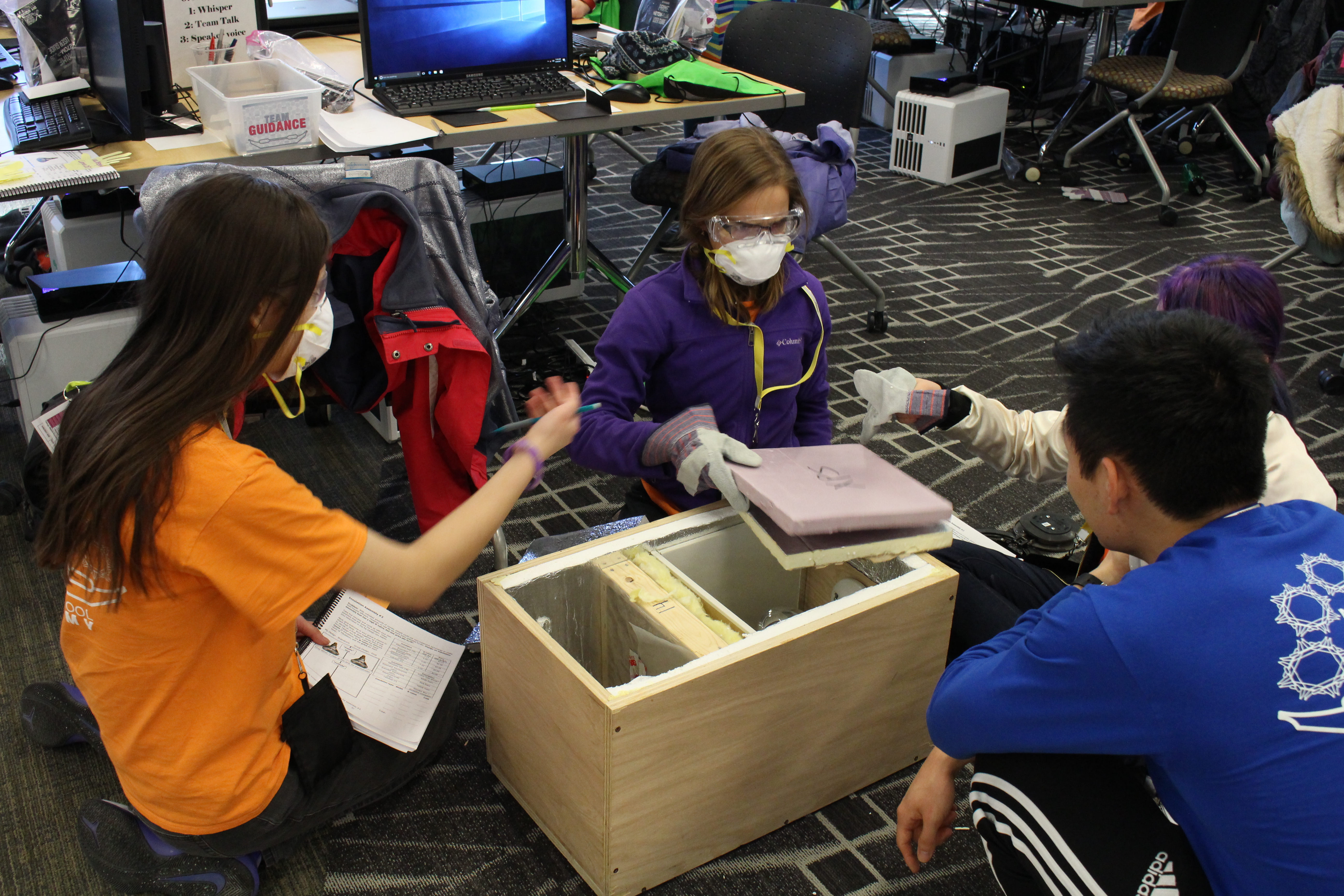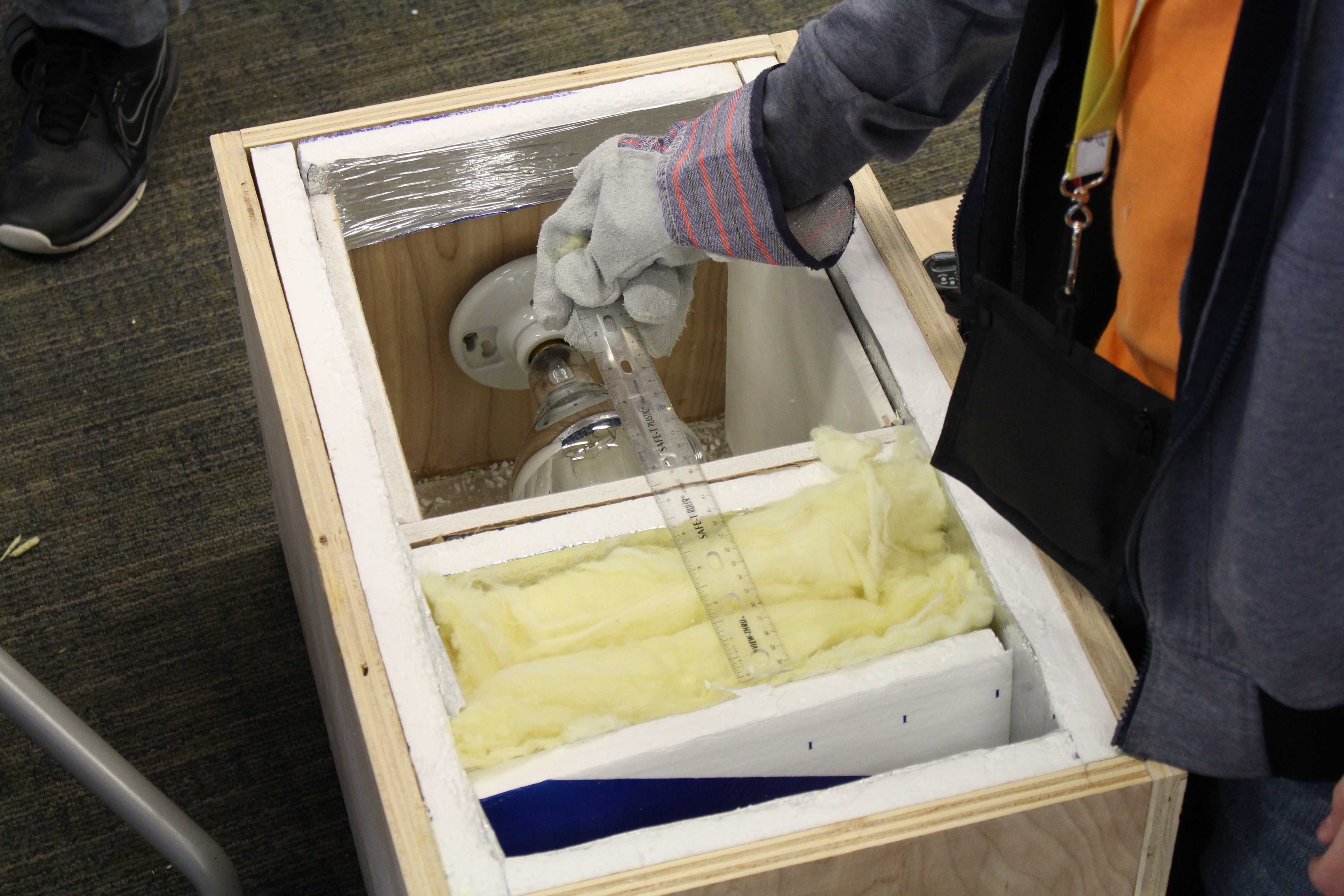
Dozens of middle school students are in Anchorage from the Matanuska-Susitna Borough School District for hands-on learning at the Alaska Native Science and Engineering program (ANSEP).
The program is designed to spark an early interest in science, technology, engineering and math, subjects that ANSEP staff say are sometimes difficult for kids to get into.
The ANSEP Academy was full of kids on a recent day. They hovered over insulated wooden boxes, taking notes. There is a thermometer and a heat lamp inside, said Colony Middle School Student Issac Smith.
“So right now it’s 217 degrees inside here,” Smith said.
These students are already seeing the importance of good insulation.
“If we’re building like a house or something, and we need to keep the heat inside the house, we could use this to keep the heat inside the house,” Smith said.
The experiment is just one the students will undertake. They had already built their own computers and were on track to build bridges and simulate earthquakes, among the other activities.
The students have all applied to be here, and the all-expenses-paid academy houses them on the University of Alaska Anchorage campus.
“I mean it’s better than working, in math class,” Smith said, laughing.
According to ANSEP regional director Audrey Alstrom, part of why the program succeeds is that it is simply more engaging than traditional classroom instruction. The program also raises expectations for the kids, who are on track to begin taking high school classes. When they are in high school, they will be ready for college-level instruction.
“When you see the kids excited about math and science, you know it’s working,” Alstrom said.

The students are also learning communication and teamwork skills, and they’re gaining confidence, Alstrom said.
“It’s fun working with the students and seeing their growth. You know, just as students from the first day they arrive on campus, they’re a little shy, a little timid. They don’t know what to expect,” Alstrom said. “And seeing that progression and confidence that they’ve gained in the 12 days they’re here. On the last day they’re able to get up and introduce themselves and give a presentation to a big group.”
In the middle of the room, Alex Burks-Dakutak is explaining a math equation to one of her teammates.
“We’re working out how many gallons of heating fuel we’ll need for the R value inside of our box,” Burks-Dakutak said.
Burks-Dakutak’s teammate, Anna Bell, said terms like “R value” — a measurement of how well insulation works — are not unfamiliar to her.
“My dad builds a lot of stuff, like he built my dog house and our chicken coop, and so he talks a lot about the heating and insulation,” Bell said.
Bell said she planned to take the new knowledge home to help her dad.
The girls admit that everyone is also enjoying being away from home. Darin Dicang said that after the academy sessions, they play board games and dance.
“You get to hang out with people you know, most likely, and you don’t get to do that at home. It’s like a big sleepover for two weeks,” Dicang said. “You get to be with a bunch of girls and not deal with siblings, parents, necessarily chores, you know, dishes.”
Casey Grove is host of Alaska News Nightly, a general assignment reporter and an editor at Alaska Public Media. Reach him atcgrove@alaskapublic.org. Read more about Caseyhere.





